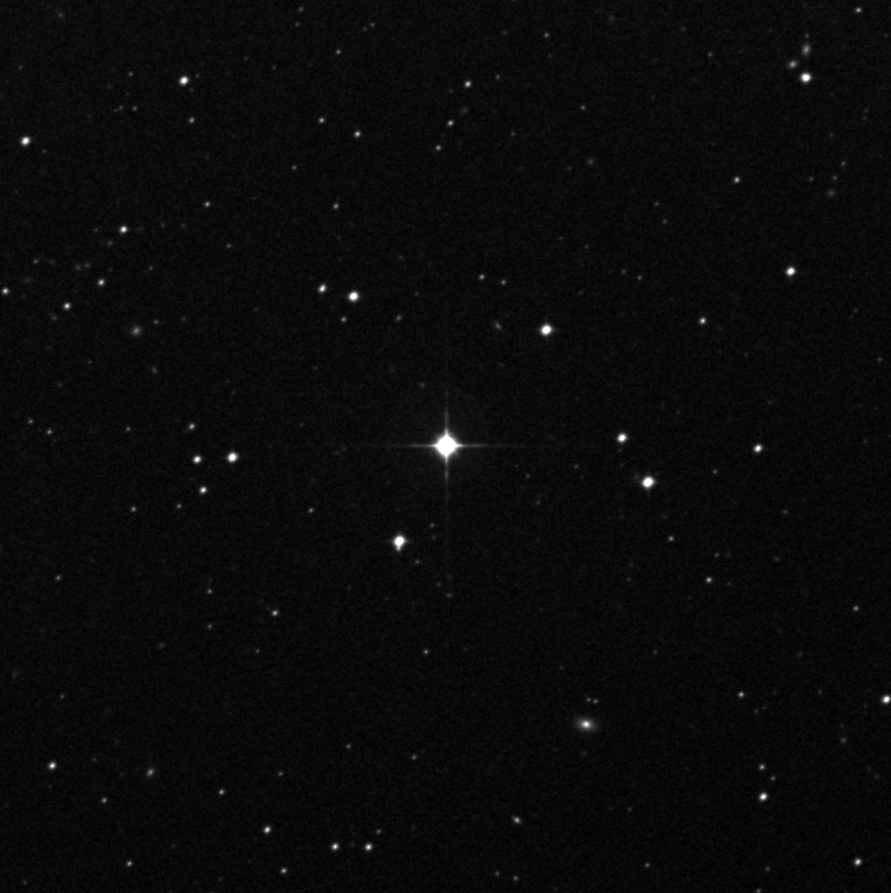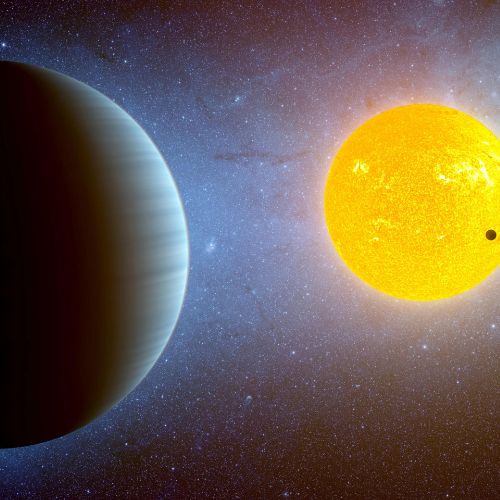
HD 222925 is a ninth-magnitude star located toward the southern constellation Tucana. (Credit: The STScI Digitized Sky Survey)
Record-Setting Star Offers Clues About the Origins of Heavy Elements Found on Earth
Astronomers identify widest-ever range of elements in a star beyond our solar system
New findings about an old, relatively bright star in the Milky Way galaxy are giving astronomers insights into the origins of heavy chemical elements found throughout the universe. The star, HD 222925, contains the widest range of elements ever identified in a single object outside our solar system.
Of the 65 elements identified, 42 are heavy elements such as silver and gold, a team of astronomers found in a study accepted for publication in the Astrophysical Journal Supplement Series and posted on arXiv.
By detecting so many heavy elements in a single star, researchers now have a fuller view of the phenomenon that produced them: a set of nuclear reactions known as the rapid neutron capture process (r-process), which is responsible for most of the heavy elements in the universe.
“HD 222925 provides us with a one-of-a-kind observational probe to the highly energetic and explosive events that formed most of the heavy elements in the bottom half part of the periodic table,” said RANA EZZEDDINE, PhD, assistant professor of astronomy at the University of Florida and one of the study’s authors. The study was led by astronomer Ian Roederer, PhD, of the University of Michigan.
Environments where the r-process can occur and create such a range of heavy elements are rare — only extreme conditions can generate these blasts of activity. HD 222925 is a “relic of the early universe,” Ezzeddine said, and was likely born from a gas cloud that had undergone an explosive event that spurred on the r-process, such as a collision involving a neutron star.
“HD 222925 provides us with a one-of-a-kind observational probe to the highly energetic and explosive events that formed most of the heavy elements in the bottom half part of the periodic table,” Rana Ezzeddine said.
The discovery of HD 222925’s chemical inventory tells us that most of the heavy elements we find in our solar system and here on Earth have the same “origin story” and were likely produced by a similar event, Ezzeddine said.
HD 222925 has a special set of qualities that made it possible for the team of astronomers, many of whom are part of a collaboration called the R-Process Alliance, to identify so many elements. The star is relatively bright and, as part of the Milky Way Galaxy, close to Earth, allowing the researchers to obtain higher quality data with large, ground-based telescopes.
The star’s relatively cool surface temperature also allowed the Hubble Space Telescope to collect data in the ultraviolet spectra that couldn’t be detected by ground telescopes, increasing the chemical inventory by 40 percent.
Looking ahead, the researchers plan to use the discovery of HD 222925’s chemical inventory as a template to make connections with similar stars to better understand the physics of the r-process. Ezzeddine’s group and others in the R-Process Alliance already have other stars that they are currently analyzing.
“The R-Process Alliance is on a quest to understand the formation of the heavy elements via the r-process, and has been working to find more rare and unique stars like HD 222925 to trace back the conditions of the events at early epochs,” Ezzeddine said. By doing so, they hope to identify which elements and in what amounts were produced in the r-process in an unprecedented level of detail.
Read the full study at arXiv. Learn more about Ezzeddine’s research here.


